The refreshed Volkswagen Polo GTI debuted at the last Paris Motor Show. Its slight aesthetic changes only serve to emphasize the important technical changes made to the GTI. Technical modifications, by the way, highlighting the important change in the philosophy of the car.
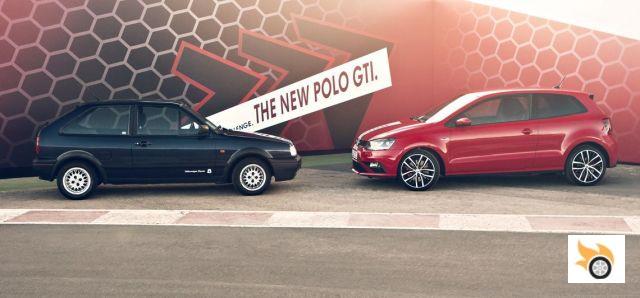
Since the second generation (1981-1994) of the Volkswagen Polo, there has always been a sporty variant in the range. It all started with the famous Polo GT G40 and its G-shaped supercharger with 40 mm spirals - hence the name G40. The first Polo GTi would come with the third generation of the Polo, introduced in 1994. Since then, the Polo has gradually positioned itself as the little brother of the Golf GTI, the references to its big brother being more and more marked with the passing of the generations.
The new Polo GTI doesn't hide its kinship to the Golf GTI either - on the contrary. But just as with siblings, a strong physical resemblance and obvious family ties do not prevent each from having its own personality. And that of the Polo GTI is almost more interesting than that of the Golf GTI.
Sports genes
The sporty versions of the Volkswgen Polo have been a constant since 1989. In 1974, Audi launched the Audi 50, a three-door hatchback, which Volkswagen took over in 1976 to create the Polo. Years later, Volkswagen wants to repeat the success of the Polo and in October 1981 launches the Polo Mk2. Soon, they also offer a coupé version, the Polo GT, equipped with a small 1.2 litre 75 bhp engine. The success of the Polo continues and in 1983, one million units are sold. It was time to celebrate and they set out to create a more racy, fun model that would revalue the Polo's image as an efficient, sober but boring utility car. As there is little room in the engine bay, instead of opting for a turbo or a fat engine, solutions adopted by the Renault 5 GT Turbo and Peugeot 205 GTI, respectively, in Volkswagen recover an old patent (from 1905!) of a French engineer: the compressor by spirals, or compressor G, to supercharge the block of the Polo.
The Volkswagen Polo GT G40 Coupé makes its debut at the 1985 Frankfurt Motor Show. The car turns out to be a rocket, forms the basis of the Polo Cup and the trade press of the time raves about the GT G40. It is equipped with a 1,272 cc 4-cylinder supercharged by a 40 mm G supercharger blowing at a maximum of 0.68 bar. It produces 115 hp at 6,000 rpm and delivers 150 Nm at 3,600 rpm and above all weighs only 845 kg...
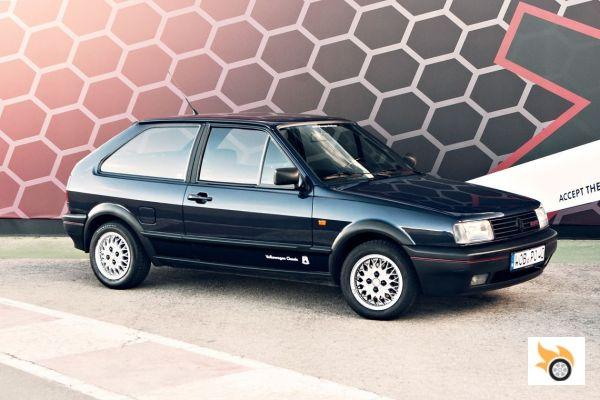
Its marketing in limited series is made from 1986 - just when the Polo reached 2 million units sold globally - but a price too high for its target audience make it today a rare model and collection. Finally, in 1990 the Polo G40 became an additional model in the Polo range. In 1994 the third generation of the Polo arrived and with it the first Polo GTI. Finally, according to Volkswagen Classic, around 1,500 units of the "standard" G40 were produced. [If you have one, restore it and don't sell it].
The Polo II G40 was a little flea with ultra-light steering and a wiry character above 3,500 revs, especially when cornering. At a time when the Clio 16v was facing the absolute king of the category, the Peugeot 205 GTI, the Polo G40 was presented as a more radical car, more delicate, more "old school" in short. But with the Polo III GTI, Volkswagen wants to make it more like the Golf GTi and the Polo becomes more of a grand tourer than a small sports car.
Subtle touches
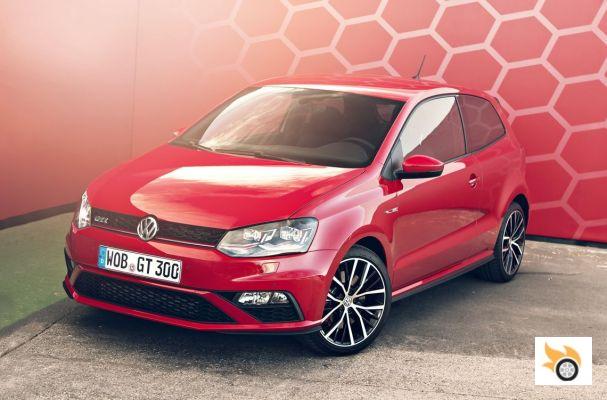
The red grille line extends into the headlights, in the style of the Golf GTI.
Back to the new Polo. Unlike the rest of the range, it's easier to distinguish the new GTI from the previous 180bhp model, at least from the front. While the cosmetic changes are minor, they are more obvious. The front bumper features a body-coloured front wishbone, while the red grille line extends into the new headlights - with LED daytime running lights - as it would on a Golf GTI. At the rear, the differences are less obvious. The LED lights are now slightly darker than on the rest of the range and the new upper spoiler has a black part. Incidentally, this is a bolt-on spoiler that involves a specific stamping of the tailgate for the Polo GTi. The 17-inch wheel designs are also new.
On board, the sports seats - which don't hold anything, by the way - retain the GTI's Scottish tartan "Clark" upholstery as standard, while some dashboard plastics are new. This is particularly noticeable in the centre console, around the updated infotainment system. And that's it? Fortunately, the most important changes can't be seen at first glance, they have to be experienced.
Heart transplant
The outgoing Polo GTI was equipped with a 180 hp 1.4 TSI exclusively paired with a DSG transmission. This engine, which does not meet Euro 6 standards, is replaced by the 4-cylinder EA888 that equips a number of VAG group models in various displacements, including the Golf GTI. It is an engine that we already know. It is characterized by a double direct and indirect injection, as well as a variable lift and stage distribution. In the case of the Polo, it has a displacement of 1,798 cc. It is worth noting that it weighs 6 kg less than the previous 1.4 TFSI, that the turbo dump valve is electric and that the intercooler is new, as well as the intake. The battery is still in the trunk, for a matter of weight distribution.
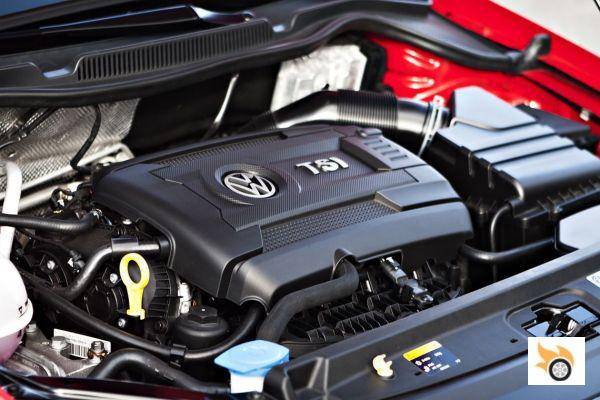
If the previous Polo GTI was only available with DSG gearbox, the new Polo GTI has a manual gearbox for the first time. And that changes everything, never better said. This 1.8-litre engine produces 192 hp from 4,200 rpm to 6,200 rpm. That's 12 hp more than the outgoing GTI. With the 6-speed manual gearbox, it delivers 320 Nm from 1,450 to 4,200 rpm, that's 70 Nm more than the previous GTI. The 7-speed DSG transmission is still available, but if we opt for this transmission, the torque is limited to 250 Nm, as in the previous version. And is that the gearbox would not support more than 250 Nm without compromising its reliability.
The presence of the manual gearbox is due to a certain resurgence of this type of gearbox in sports models. The Ford Fiesta ST proved that it could be the benchmark in the segment by relying exclusively on the manual gearbox. And it is that the public of this type of car appreciates the sporty driving and purity in it that gives a manual gearbox. In some markets, such as Spain or France, the public will prefer the DSG for tax issues related to emissions, but in the UK, Germany or Switzerland, there is no doubt that customers will prefer the manual gearbox. In fact, if Volkswagen dares to propose a more "radical" Polo GTI, it is because of the demand in those markets. And in order to propose a more genuine car, Volkswagen also had to modify the suspension and tuning.
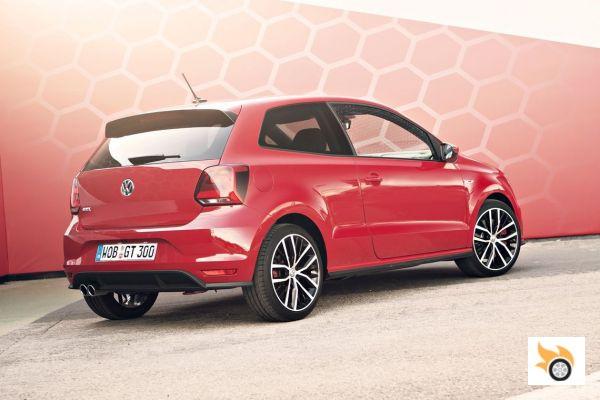
With new suspension and tuning, it's a more genuine GTI.
The basic suspension layouts remain unchanged, but the rear axle is stiffer and the front anti-roll bar is thicker with new anchor points. It also now includes variable damping linked to the Sport Performance Pack. By pressing the Sport button on the dashboard, the engine response becomes more incisive, the damping and steering - now electromechanical - are stiffer and the engine sound is more present (which is totally artificial), if equipped with DSG, the changes are made more quickly. Last but not least, it rides 15 mm lower than other Polos.
All these changes allow the new Polo GTI to cover the 0 to 100 km/h in 6.7 seconds (an improvement of 0.3 seconds compared to the previous one), reach a top speed of 236 km/h and do 80 to 120 km/h in fourth gear in just 5.5 seconds. On paper, it's all very nice, but now it's time to get on the track to see how it all translates, steering wheel in hand.
At the wheel
I should point out that in the few laps we were allowed to do at the Ricardo Tormo circuit, we could only do so with DSG-equipped Polos, so our appreciation of the engine's performance is somewhat mitigated. The first laps without Sport mode on show a noble chassis and a more than satisfactory engine response, but the kick down takes forever... And in a DSG it shouldn't happen. It's true that the steering is a bit light, but it's direct enough. The steering inputs are straightforward and the XDS+ (self-locking emulator) helps to pass the power and maintain the trajectory.
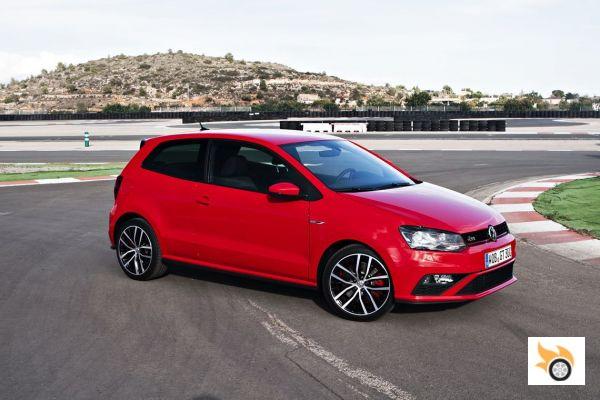
We press the Sport button. Lately, in some cases, pressing the Sport button is equivalent to changing the damping from the "board" to the "marble" position (I'm not looking in the direction of Munich or Longbridge, no way...), but this is not the case of the Polo GTI. In its case, the changes are much more subtle in terms of damping, but much more evident in terms of engine response and very noticeable in the steering.
Squeeze the throttle and the GTI shoots off like a hound dog. There's no noticeable torque steer phenomena and gear changes are made with no perceptible power interruption; the sound of the sound actuator speaker at the base of the windscreen becomes much more present... and ridiculous. Honestly, they could do without it.
But you soon forget about it as soon as you take the first corners. Stability in fast corners is spectacular: very controlled body movement, superb poise and you feel the wheels on the steering wheel. Yes, it turns out that the much criticized electromechanical steering is good here (Guille already explained to us that in theory an electric steering is ideal, but it all depends, in the end, on the set-up).
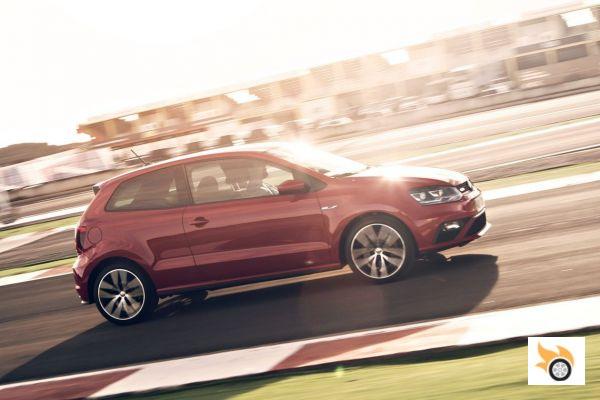
We don't lose that initial good feeling in the tight corners and chicanes that have been coned so we don't get too excited... In fact, I find the Polo GTI even more agile than in the previous version. The liveliness of the steering, the better suspension and the XDS+ make quick changes of direction a breeze. It obviously retains some understeer, lengthening the trajectory in some cases, but the XDS+ reduces that tendency quite a bit. In return, brake warm-up is noticeable. On the road it shouldn't be a problem, but I didn't find it an ideal car for track laps. The rear end, on the other hand, follows the trajectory with some laziness; you won't easily dislodge it, but it's not one of those that follows the front end like a shadow.
Stability in fast corners is spectacular, but it retains some understeer.
However, the front end still isn't as precise and responsive as the Fiesta ST or MINI Cooper S and the level of steering communication could be improved. By the way, Volkswagen could get in touch with Recaro or König to provide it with seats that support it a little bit, just a little bit would be nice. This GTI is more agile than the previous one, even more efficient, and much more communicative than the previous one: you feel more and better what the wheels are doing. However, there's still something artificial about it. What would it need to be at the top of the list of our favourites? A bit more madness. That is, even more direct steering and above all, an even more communicative car. And that's where the manual version comes in.
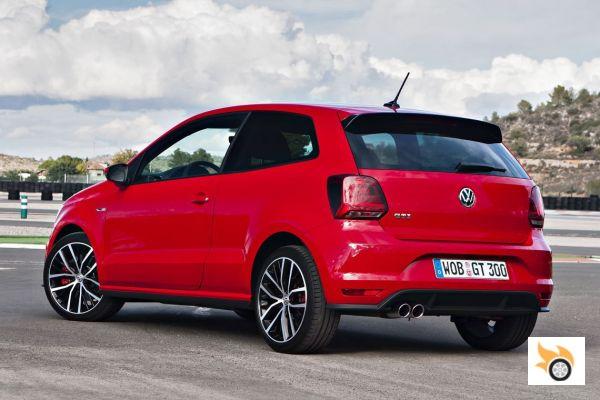
With the 70 Nm more offered by the engine associated with the manual gearbox, the car becomes more lively, faster. Just look at the recovery in 4th gear: just 5.5 seconds. It is quicker than the Ford Fiesta ST and closer to the Peugeot 208 GTI. But above all, the fact that you can change gears yourself, the handling of the gearbox is smooth and the gearshifts are really short, means that we reach a new level of communication with the car and the road. We feel whether the wheels are losing grip or not, we really feel where they're going. The Ford Fiesta ST is still the benchmark, but the Polo GTI with manual gearbox is close behind.
Volkswagen knew how to turn the tables here. With the DSG gearbox, the car is much more agile and sporty than the previous version and much more communicative. With the manual gearbox, a new level of communication and involvement with the car is reached. In other words, just what the Fiesta ST offers (although the Ford does it at a higher level).
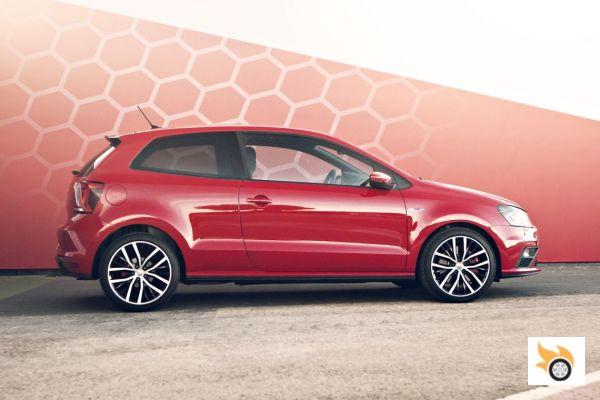
The Polo GTI is now worthy of the mythical acronym: it's fast, agile, communicative and fun when it needs to be, but it's also comfortable and refined when it needs to be. With the manual gearbox, it's back to basics and the car feels a little more radical, as it should be. The only thing missing is a real exhaust to complete its transformation and leave behind its reputation as an efficient but boring car.
The previous Polo GTI was already a good little sports car: agile, fast; also very comfortable and efficient, but tremendously aseptic. It didn't find its audience either, as it wasn't radical enough or premium enough to justify a price of around 25,000 euros. And this is where Volkswagen shows its master card. Not only have they managed to make the Polo GTI a sportier, more agile and communicative car, just as the GTI public expects, but they also offer it at an almost knock-down price.
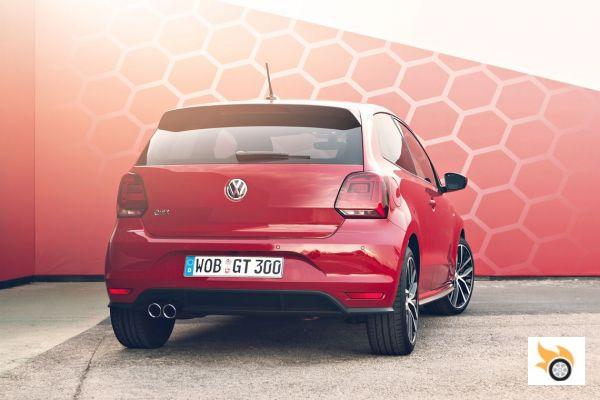
The base model, the GTi 3-door with manual gearbox, costs 21,045 euros. Officially, its standard equipment is scarce, as almost always in German brands, but for the launch - read, as standard in the Spanish market, the car comes standard and without extra cost with the following options: "Discover Media" Navigation system, colour touchscreen, USB slot, AUX-in and two SD slots, "Climatronic" climate control, "Light and Vision package", leather multifunction sports steering wheel (with DSG shift paddles), "Sport Select" running gear with "Sport Performance Kit" and LED headlights and LED daytime running lights.
So, would I buy one? The Polo GTI isn't the most fun in its class, but it's much improved in that respect. It's very efficient, fast, refined, communicative and it happens to have one of the best performance/accessibility/equipment/price ratios on the market. And what you save with these free options would allow me to cancel the sound actuator and equip the Polo with an Akrapovic or Supersprint so that it finally sounds like a real GTI. In short, the Polo GTI is now a worthy rival to the Ford Fiesta ST.
Test originally published in Autoblog in November 2014.
























